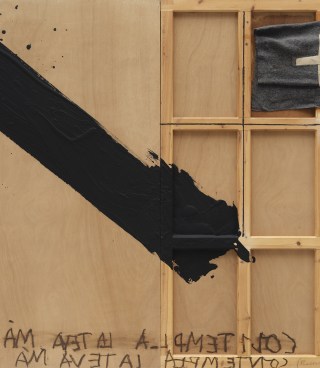Antoni Tàpies. The Practice of Art
To mark the centenary of the birth of Antoni Tàpies (1923–2012), the Museo Reina Sofía and Fundació Antoni Tàpies have organised one of the most complete exhibitions on the artist to date, spanning over 220 works from museums and private collections from all over the world to shine a light on his career arc from 1943 to 2012.
A self-taught artist, music lover and bibliophile, Tàpies constantly wrote and reflected on the human condition, his historical situation and artistic practice, particularly on the limits and contradictions of painting. His beginnings were marked by the legacy of historical avant-garde movements and his ties with, until the early 1950s, the Catalan avant-garde group Dau al Set, after which he embarked upon an extensive stage of experimentation with matter — characterised by the use of materials that were alien to artistic practice, for instance marble dust or cement — earning him international recognition.
From the 1960s onwards, he carried out a series of objectual undertakings, in which the matter present in his paintings began to take on the appearance of daily objects as he employed them to create three-dimensional works. At this time, his pollical commitment to anti-Francoism also became more clearly expressed in his work. The start of democracy in Spain, and with it a new cultural reality, coincided with fresh materic investigations, the incorporation of varnish and the influence of Eastern spirituality — reflecting his multiple interests — which would give rise to more refined works elevated with great lyricism. In the last two decades of his life, as one century made way for the next, a sense of nostalgia swept over Tàpies’s oeuvre, with an awareness of his advanced years, death and illness the presiding themes.
Through the selected works, some of which have not been shown together for many years, this exhibition foregrounds the prolific career of Tàpies, resituating his work and influences in recent art history

